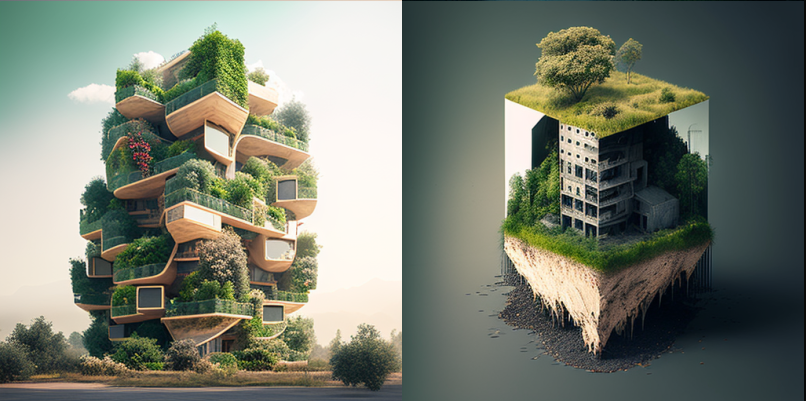Sustainable construction is no longer a choice but a necessity in today’s world. With increasing concerns over climate change, resource depletion, and environmental impact, construction projects must align with sustainable practices to meet regulatory standards and satisfy the growing demand for eco-friendly infrastructure. The key to success in this area lies in careful planning and thoughtful execution. In this article, we will explore several critical factors to consider when planning a sustainable construction project.
Contents
- 1 1. Site Selection and Orientation
- 2 2. Sustainable Materials
- 3 3. Energy Efficiency
- 4 4. Water Conservation
- 5 5. Waste Management
- 6 6. Use of Technology for Precision
- 7 7. Indoor Air Quality
- 8 8. Long-Term Durability and Maintenance
- 9 9. Community Impact and Collaboration
- 10 10. Regulatory Compliance and Certifications
- 11 Conclusion
1. Site Selection and Orientation
One of the first decisions in sustainable construction is choosing the right site and orienting the structure properly. A well-chosen site can significantly impact energy efficiency, water usage, and the overall environmental footprint of the building. Look for a location that minimizes the need for major land alterations, such as flattening hills or cutting down large numbers of trees.
Orientation is equally important. By positioning the building to maximize natural sunlight and ventilation, you can reduce the need for artificial heating, cooling, and lighting, leading to long-term energy savings. Using natural elements like trees for shade or installing reflective materials on roofs can further enhance energy efficiency.
2. Sustainable Materials
The selection of materials plays a crucial role in the sustainability of a construction project. Opt for materials that have minimal environmental impact, are non-toxic, and come from renewable or recycled sources. Popular choices include bamboo, reclaimed wood, recycled steel, and concrete with low carbon footprints.
Materials should also be durable to reduce the need for frequent replacements, which would otherwise consume more resources and generate waste. Green certifications such as LEED or FSC (Forest Stewardship Council) can guide your choices in selecting sustainable materials.
3. Energy Efficiency
Energy efficiency is one of the core principles of sustainable construction. Incorporating energy-saving technologies and designs can drastically reduce the long-term energy consumption of the building. Begin by installing energy-efficient insulation, windows, and doors. This reduces the amount of energy needed to heat or cool the building.
Renewable energy sources, such as solar panels or wind turbines, should also be integrated into the building’s design wherever possible. Smart building systems that monitor energy use and adjust settings automatically to maximize efficiency can further enhance the sustainability of the project.
4. Water Conservation
Water conservation is another essential factor in sustainable construction. This includes designing systems that minimize water waste and maximize reuse. Installing rainwater harvesting systems and greywater recycling for non-potable applications, such as irrigation or toilet flushing, can make a significant difference.
Low-flow faucets, toilets, and showerheads should also be used to reduce water consumption inside the building. Landscape designs that incorporate native, drought-tolerant plants can help minimize outdoor water use.
5. Waste Management
During the construction phase, managing waste is vital for reducing the environmental impact of the project. Implement a waste reduction plan that focuses on recycling and reusing materials. For example, construction debris such as concrete, metals, and wood can often be recycled instead of sent to landfills.
Contractors should work closely with suppliers to ensure that materials are delivered in a way that minimizes excess packaging. Proper planning can also reduce the amount of surplus materials ordered, further limiting waste.
6. Use of Technology for Precision
Advanced technology plays a major role in the success of a sustainable construction project. Utilizing Building Information Modeling (BIM) and other digital tools can help optimize resource use by improving accuracy in planning and execution.
For instance, leveraging Construction Estimating Services and Construction Takeoff Services can ensure that all materials are accounted for, reducing waste and inefficiency. These services help provide precise estimations, ensuring minimal overuse of materials, which aligns with the goals of sustainability.
7. Indoor Air Quality
The health of the building’s occupants is a significant consideration in sustainable construction. Poor indoor air quality can contribute to health issues such as respiratory problems and fatigue. To ensure high indoor air quality, use low-VOC (volatile organic compounds) paints, adhesives, and finishes. Proper ventilation systems that bring in fresh air while filtering out pollutants can make a big difference.
Additionally, incorporating plants and green spaces within the building can improve indoor air quality and create a healthier, more productive environment for the occupants.
8. Long-Term Durability and Maintenance
A sustainable building must be designed with longevity in mind. Structures that require constant repairs or upgrades consume additional resources over time, reducing their overall sustainability. Therefore, select materials and construction methods that offer durability and ease of maintenance.
Using modular construction techniques, where elements of the building are prefabricated offsite, can enhance durability while reducing waste and construction time. Sustainable buildings should also be designed with flexibility in mind so they can adapt to future needs without significant structural changes.
9. Community Impact and Collaboration
Sustainability isn’t just about materials and energy; it also involves the impact on the surrounding community. Engaging with local stakeholders, understanding their needs, and involving them in decision-making processes can create a more harmonious relationship between the project and the community.
Additionally, sustainable construction projects often provide jobs, utilize local materials, and contribute to the economy. Prioritize hiring locally and ensuring fair labor practices throughout the construction process.
10. Regulatory Compliance and Certifications
Sustainable construction projects must comply with local, state, and federal regulations regarding environmental impact, energy use, and building safety. Additionally, obtaining certifications such as LEED (Leadership in Energy and Environmental Design) can add credibility to the project and demonstrate a commitment to sustainability.
Make sure to consult with environmental experts and legal professionals to ensure that all regulations are met. Proper documentation and adherence to guidelines will ensure the project progresses smoothly and without costly delays.
Conclusion
Sustainable construction is about more than just reducing environmental impact—it’s about creating buildings that are energy-efficient, cost-effective, and beneficial to both their occupants and the surrounding community. By carefully considering factors like site selection, material choice, energy efficiency, and the use of innovative technologies, construction projects can not only meet modern sustainability standards but also stand the test of time.
Incorporating Construction Estimating Services and Construction Takeoff Services helps streamline the process and minimize waste, leading to a more efficient and sustainable construction project. Sustainable construction isn’t just the future—it’s the present. By taking these factors into account, your project will not only be eco-friendly but also a long-term success.

Sarah Wilson, an accomplished writer and seasoned blogger, weaves compelling narratives that transport readers to new and uncharted worlds. With a talent for vivid storytelling and thoughtful insight, her work leaves a lasting mark, enchanting both the imagination and intellect.
